Have you ever wondered about the fluttering, feathery creatures that bring life to our gardens and parks?
They come in all shapes and sizes, each with its unique personality and beauty.
From the cheerful chirping of the goldfinch to the melodious warbling of the robin, small birds play a big role in the animal kingdom.
With over 10,000 species, it can be overwhelming to know where to start.
But fear not, for we have handpicked 21 of the most fascinating small birds for you to discover.
Get ready to be swept away by the diverse world of avian wonders!
| Image | Name |
|---|---|
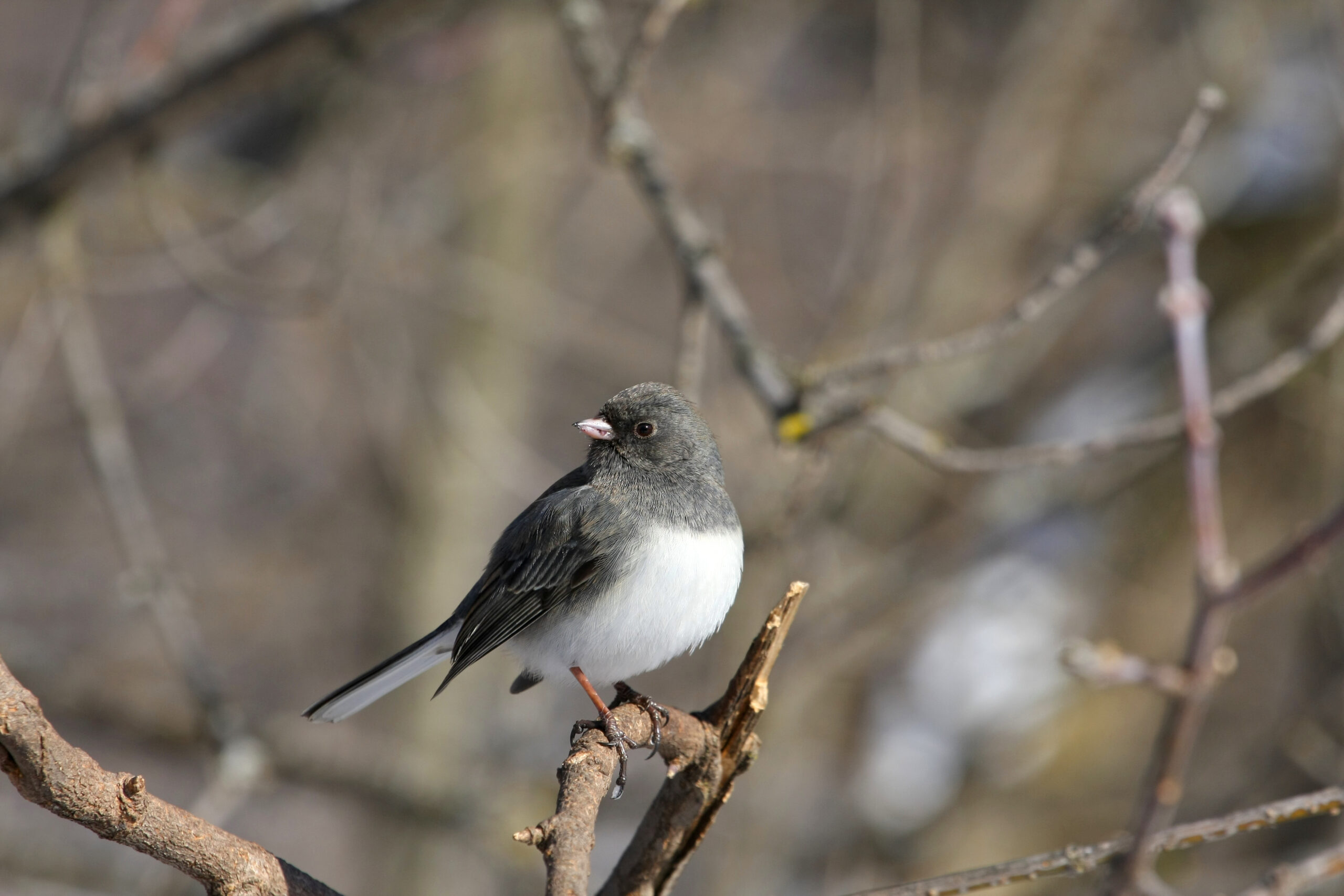 | Dark-eyed Junco |
 | Eastern Towhee |
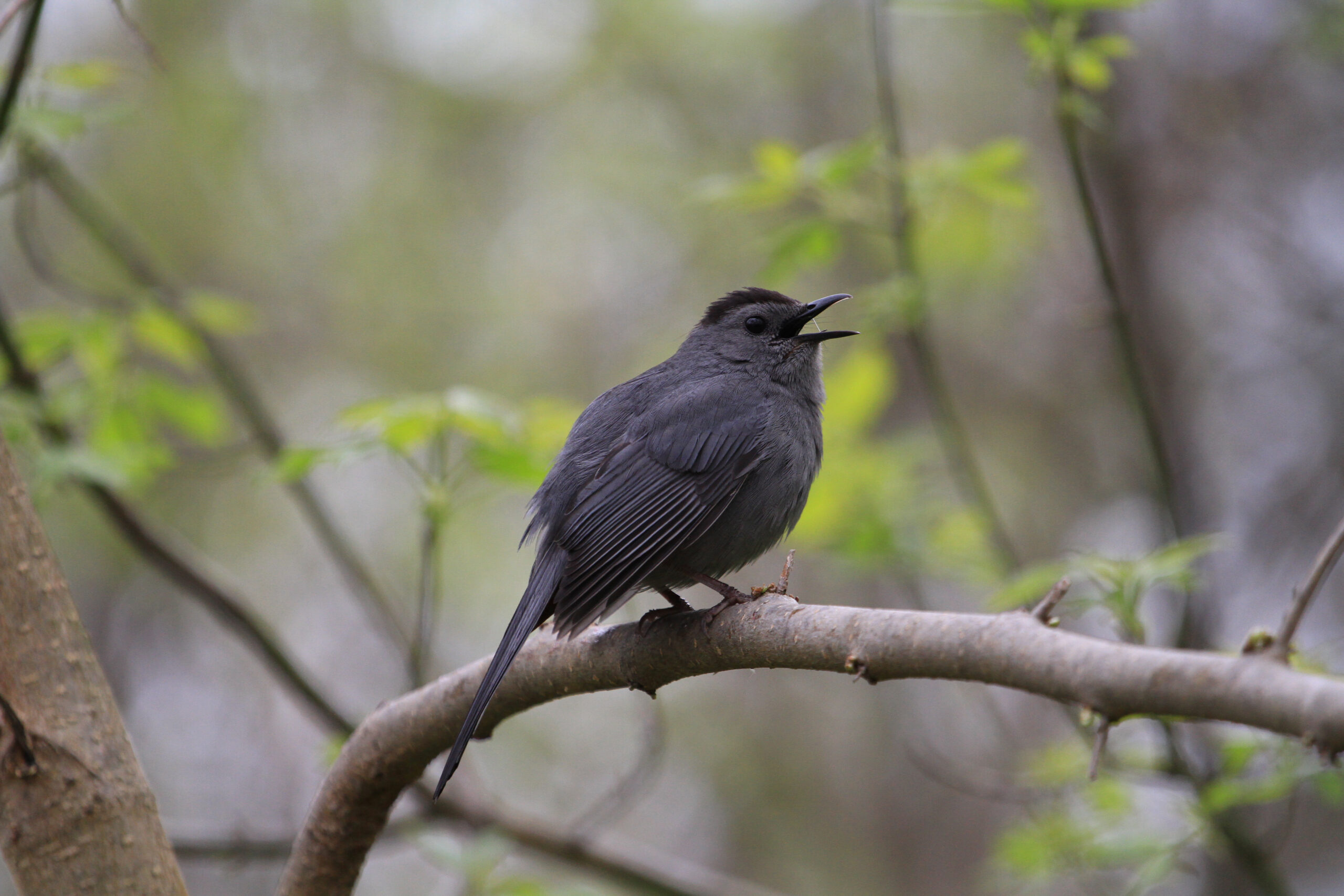 | Gray Catbird |
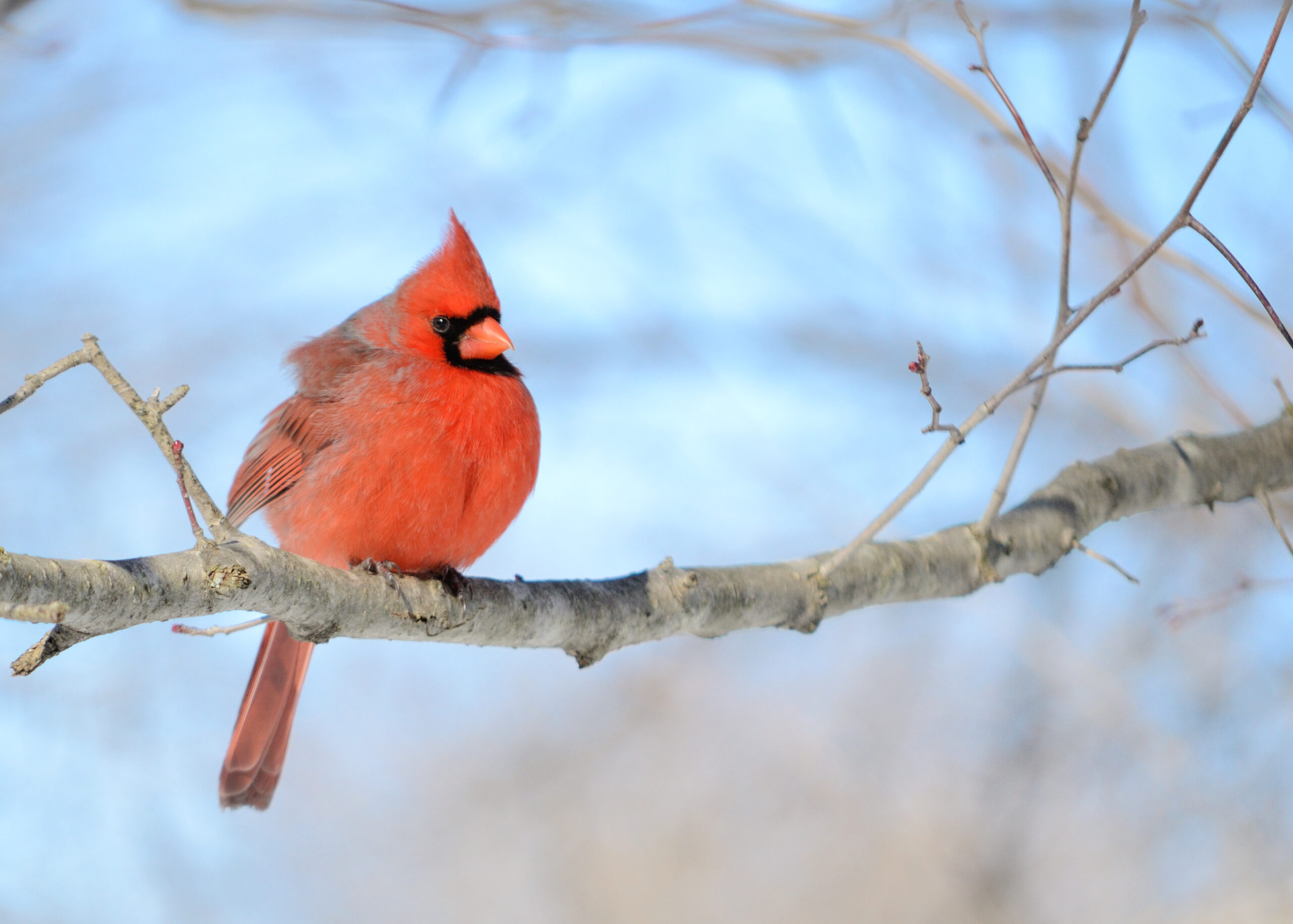 | Northern Cardinal |
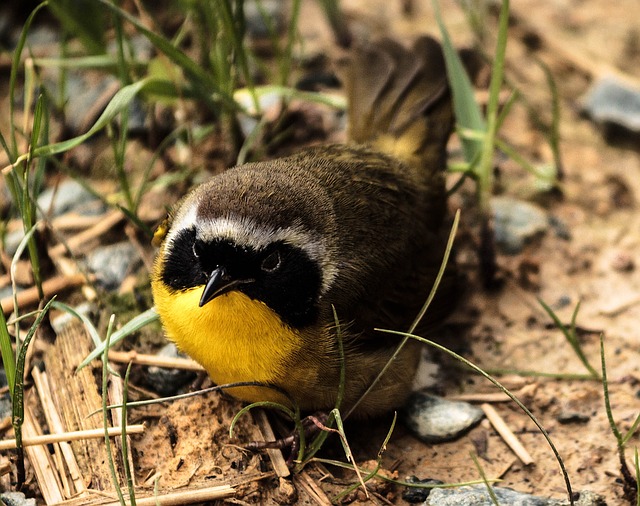 | Common Yellowthroat |
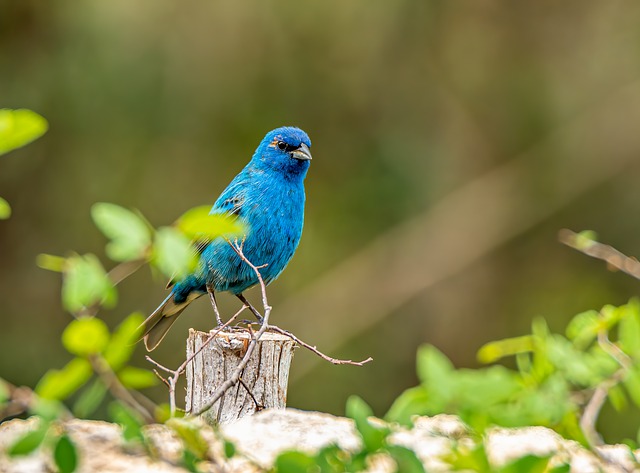 | Indigo Bunting |
 | Eastern Bluebird |
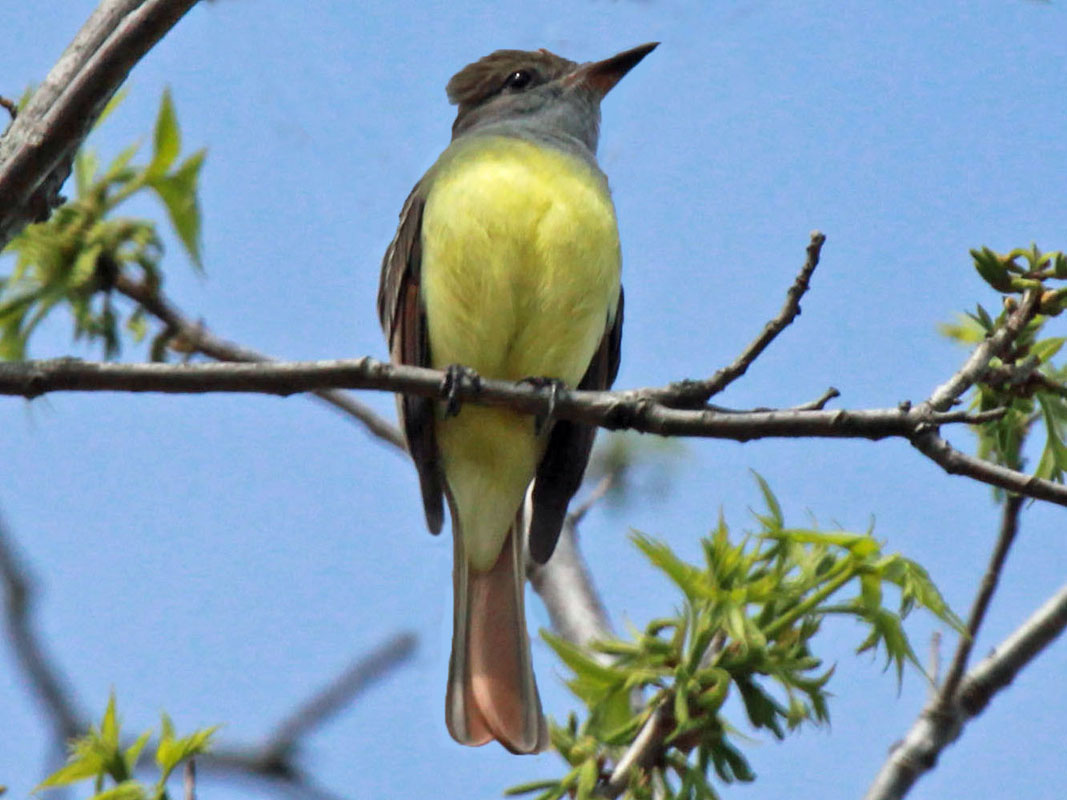 | Great Crested Flycatcher |
 | Cedar Waxwing |
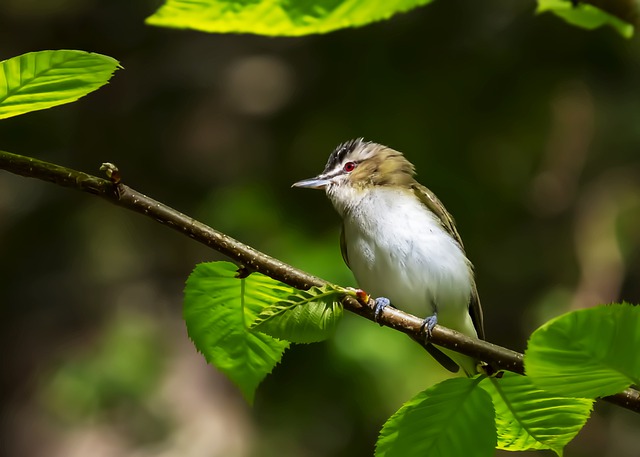 | Red-Eyed Vireo |
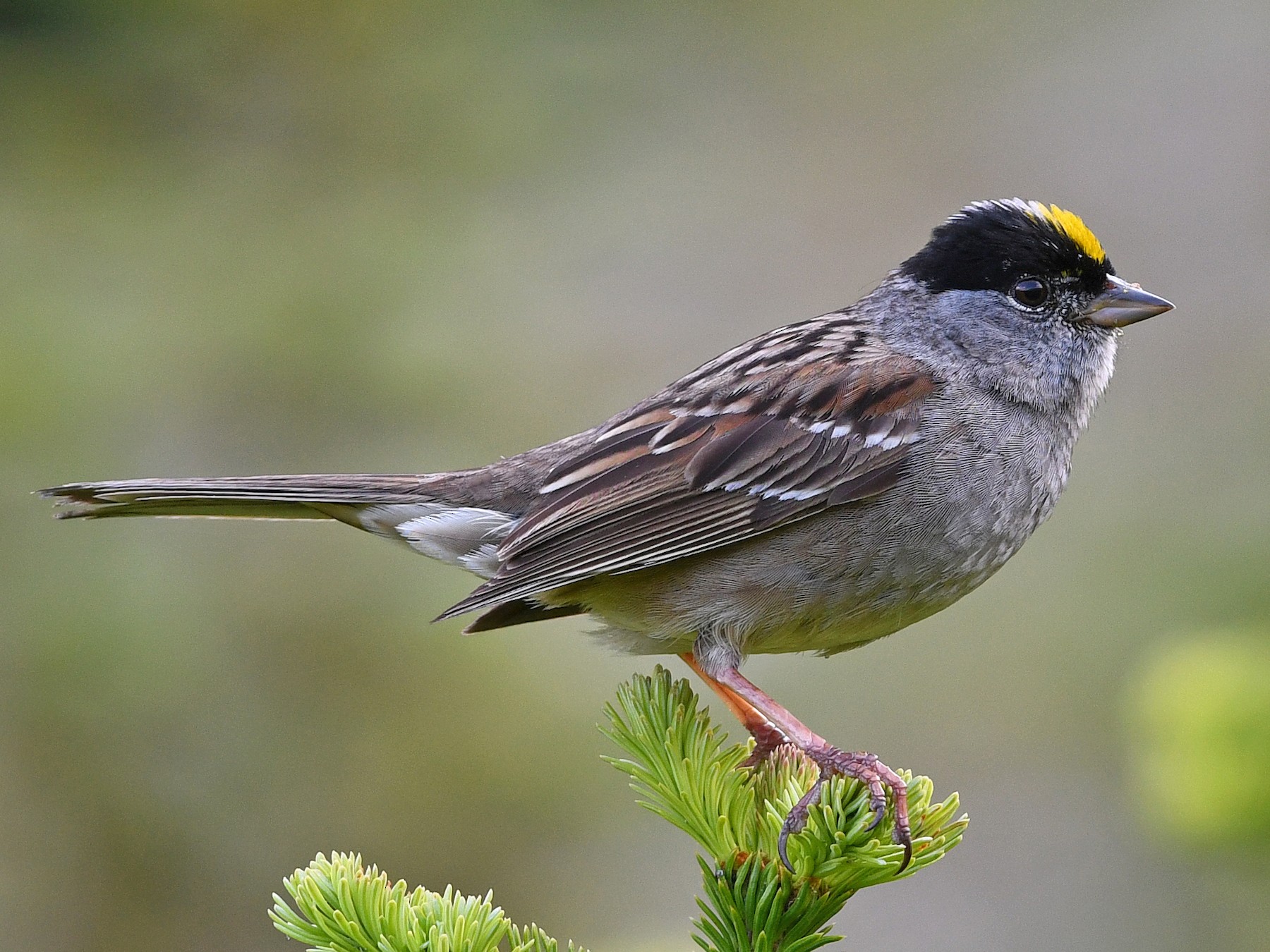 | Golden-crowned Sparrow |
 | White-breasted Nuthatch |
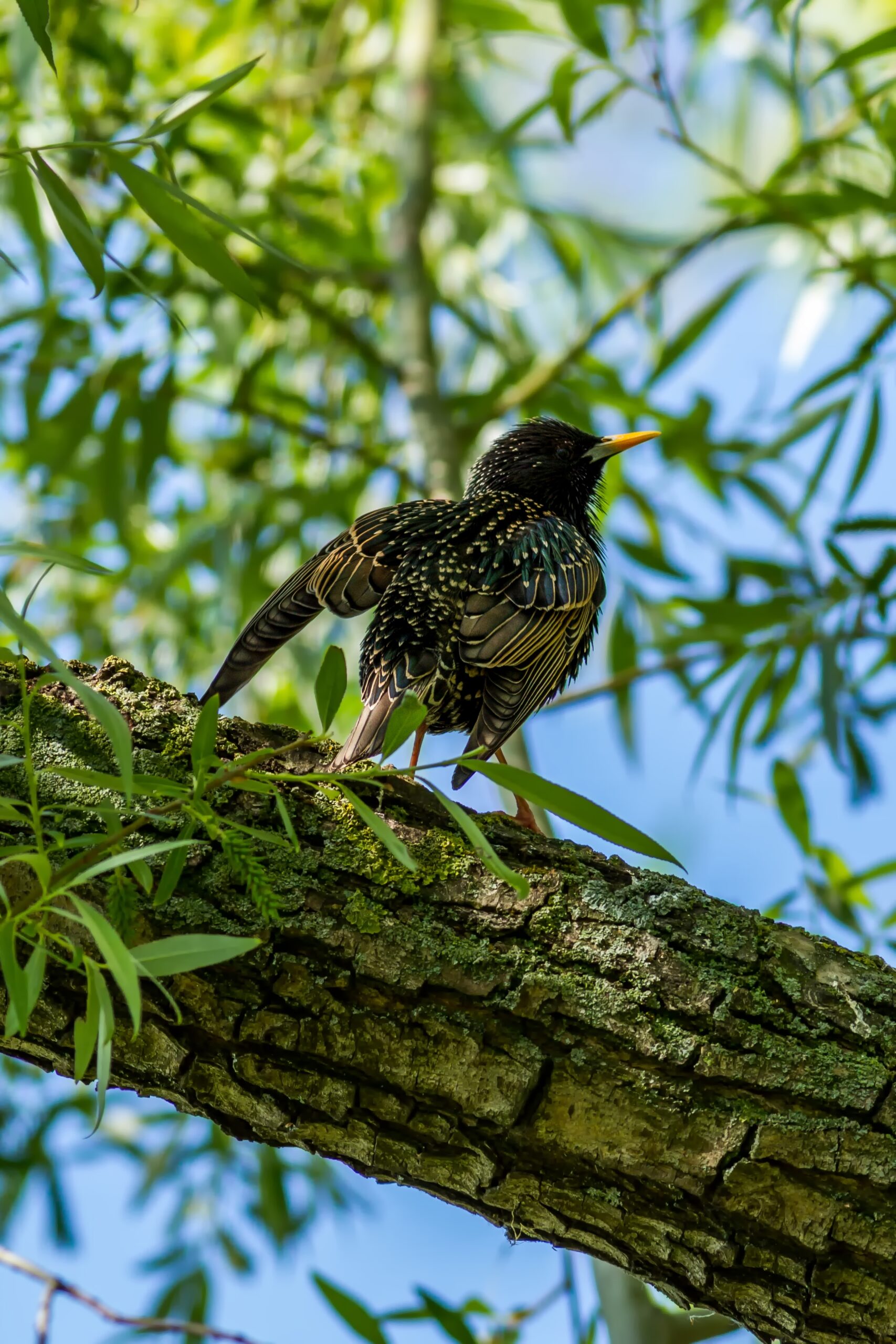 | European Starling |
 | Tufted Titmouse |
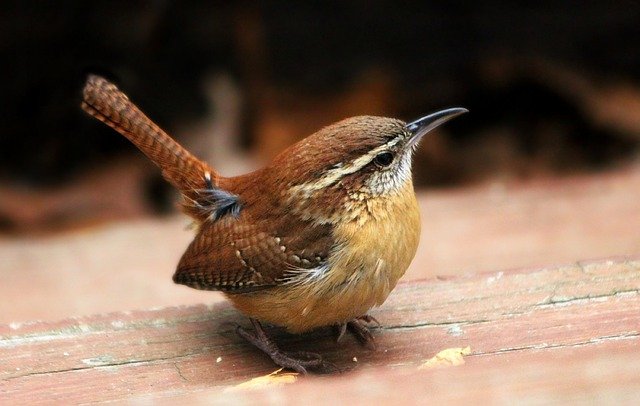 | Carolina Wren |
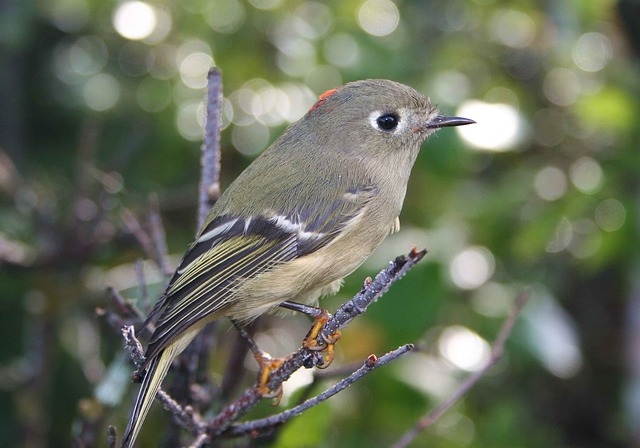 | Ruby-crowned Kinglet |
 | White-throated Sparrow |
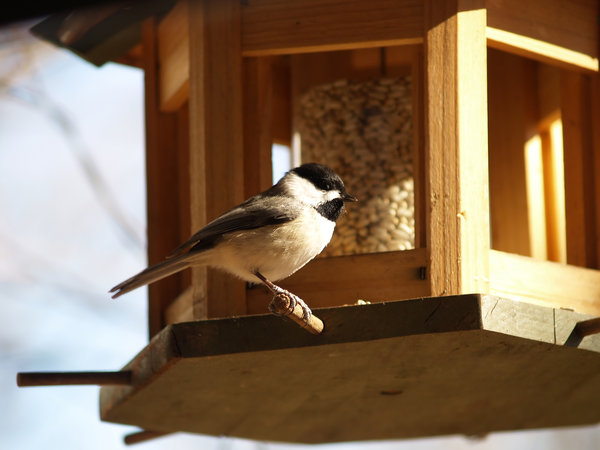 | Carolina Chickadee |
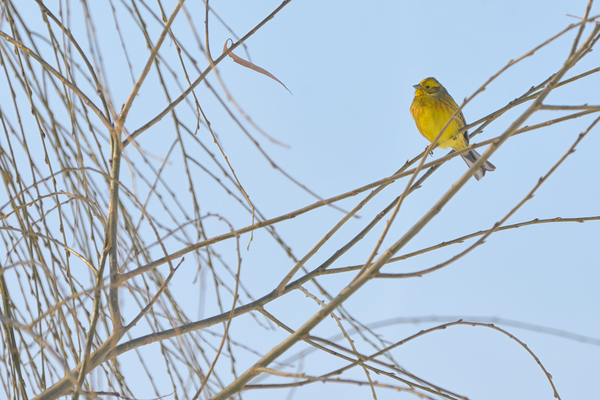 | Yellow Warbler |
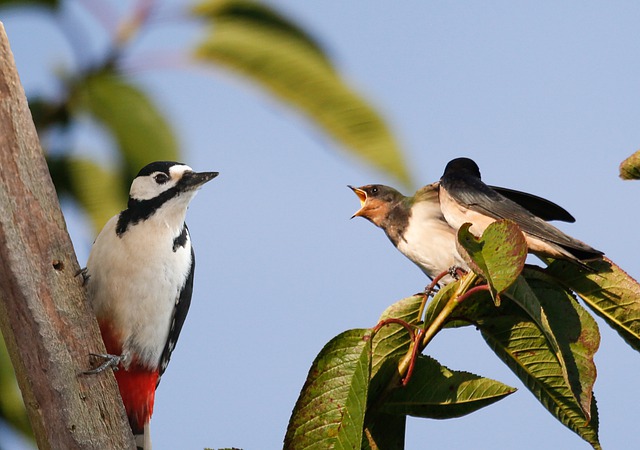 | Tree Swallow |
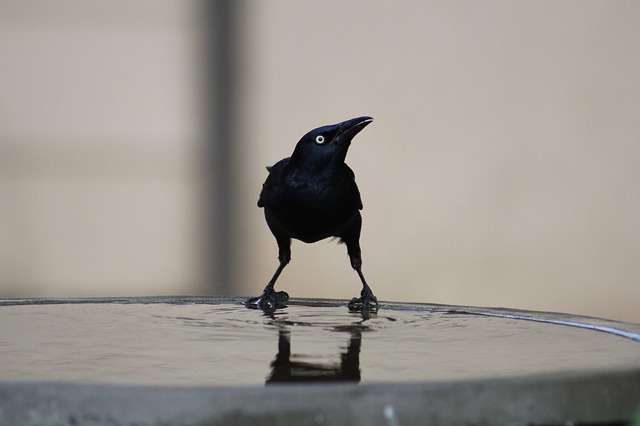 | Common Grackle |
Types of Small Birds
1. Dark-eyed Junco

Sparrows with dark eyes called juncos come in a variety of colors, each one corresponding to a distinct state.
In the east, they often have a color similar to slate, but in the west, they might be brown, black, or white.
In the west, northeast, and Appalachian Mountains, there are some that overwinter as permanent residents.
During the winter months, those that spend their breeding seasons across Alaska and Canada go south to warmer climates in the rest of the United States.
They are widespread over the continent and may be encountered in locations that are open or slightly forested.
They usually appear on the ground.
You may increase the number of Dark-eyed Juncos that visit your garden feeders by offering a wide range of seeds, like peanuts, millet, sunflower seeds, cracked corn, and nyjer.
The most effective feeders are either elevated platforms or food dispersed throughout the ground.
2. Eastern Towhee

Beautiful and huge sparrows, Eastern Towhees, are around the same size as Robins and are distinguished by their black backs, heads, and throats, white bellies, reddish flanks, and long tails in males.
The females look the same, but they have a brown color instead of black.
Although Eastern Towhees are perennial residents of the southern United States, northern birds migrate south for the wintertime, and western members of the species’ range may never see one unless it’s winter.
Eastern Towhees are ground-dwelling birds that may be seen foraging in the underbrush of woodlands and other dense vegetation.
You may attract Eastern Towhees to your backyard by providing hulled sunflower seeds, sunflower seeds, millet, and cracked corn in platform feeders, as well as cleaning up any spilled seed from your garden’s overgrown boundaries.
3. Gray Catbird
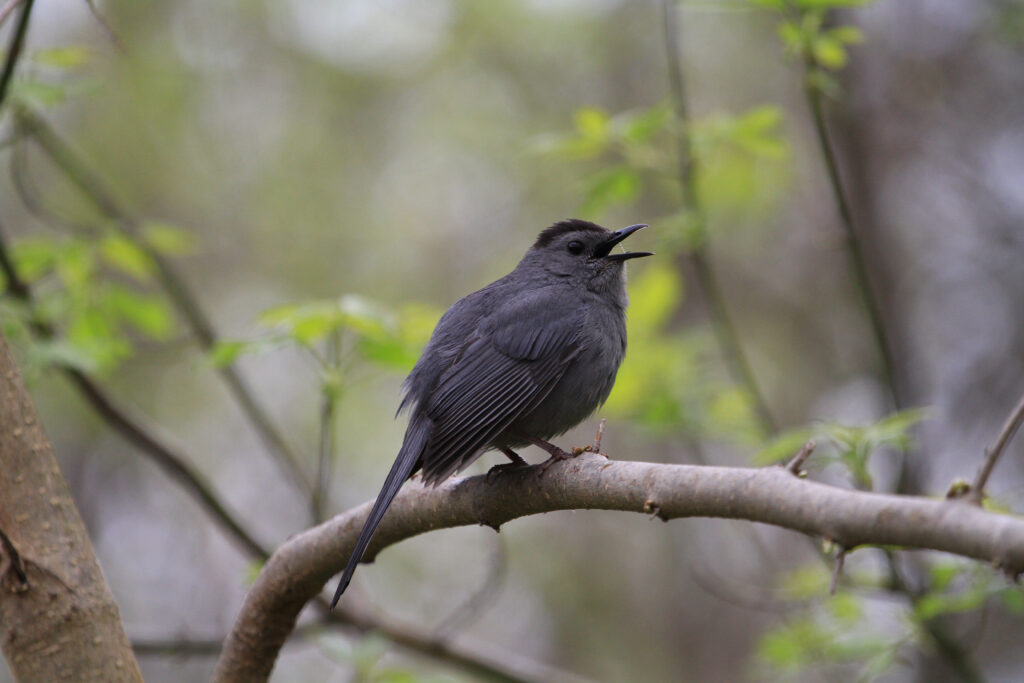
The Gray Catbird got its name from the peculiar catty mew sound it sings, which may linger for up to ten minutes at a time.
They are greyish in appearance, have black tails and caps, and have a rusty spot beneath their tails.
The Gulf Coast and the Caribbean are where Gray Catbirds spend the winter after breeding, mostly in the Midwest, the East Coast of the United States, and southern Canada.
A few of them stay near the East Coast for the whole year.
Gray Catbirds may be found in thickets of small trees and bushes, as well as at the borders of forests and in hedgerows.
You may increase the number of Gray Catbirds that visit your garden feeders by planting shrubs and trees in your backyard that bear fruit, like serviceberry, dogwood, and winterberry.
4. Northern Cardinal

Against a snowy winter backdrop, the male Northern Cardinals stand out due to the brilliant red color of their plumage and the black that surrounds their faces.
The females, featuring their red beaks, red accents, sharp brown crown, and brown coloration, may also be considered a little bit flashy.
The Eastern portion of the United States is the year-round home of the Northern Cardinal.
During the mating season, male Northern Cardinals are so obsessed with protecting their territory that they may sometimes fight their own reflections.
Peanut hearts, sunflower seeds, milo, and millet are some of the best foods to put in garden feeders if you want to see more Northern Cardinals.
They will consume food from a huge platform, tube, and hopper feeders, as well as food that has been dispersed on the ground.
5. Common Yellowthroat

The Common Yellowthroat is a tiny species of songbird that has a brownish back and a brilliant yellow underside. These birds have long tails.
The guys all dark sports mask that cover their faces.
The intensity of the golden color may vary from region to region, and in certain areas, the undersides could be more olive in hue.
Common Yellowthroats spend their summer months reproducing over the majority of North America, with the exception of the northern regions of Canada and Alaska.
A few survive throughout the year across the Pacific Southwest and near the Gulf Coast.
They spend the summer and spring months dwelling in dense, tangled vegetation, which makes them easy to see in marshland or wetland environments as well as brushy areas.
They subsist mostly on insects and are most likely to be discovered in expansive gardens with lush foliage.
6. Indigo Bunting

Male Indigo Buntings are brilliant blue having black spotting on the tail and wings, whereas females are brown.
The nesting areas of Indigo Buntings are in the eastern United States, but they spend the winter across the Caribbean, Florida, and Central America.
Indigo Buntings forage for food in weedy meadows and the shrubbery.
Small seeds, including thistle and nyjer, may entice a greater variety of migratory birds to your area.
7. Eastern Bluebird

The Eastern Bluebird is a tiny thrush with broad, wide eyes, a plump belly, and a rounded head.
Males have a dark blue back and a ruddy underside.
The female is mostly grey below, with hints of blue in the tail and wings and a duller orange-brown chest.
In much of their territory in the Eastern United States, they are permanent residents, although they may go south for the winter.
It is common to see them in meadows, where they sit on low branches, poles, and wires in search of insects.
If your garden is wide and roomy, luring Eastern Bluebirds with mealworms and nesting boxes might be a good idea.
8. Great Crested Flycatcher
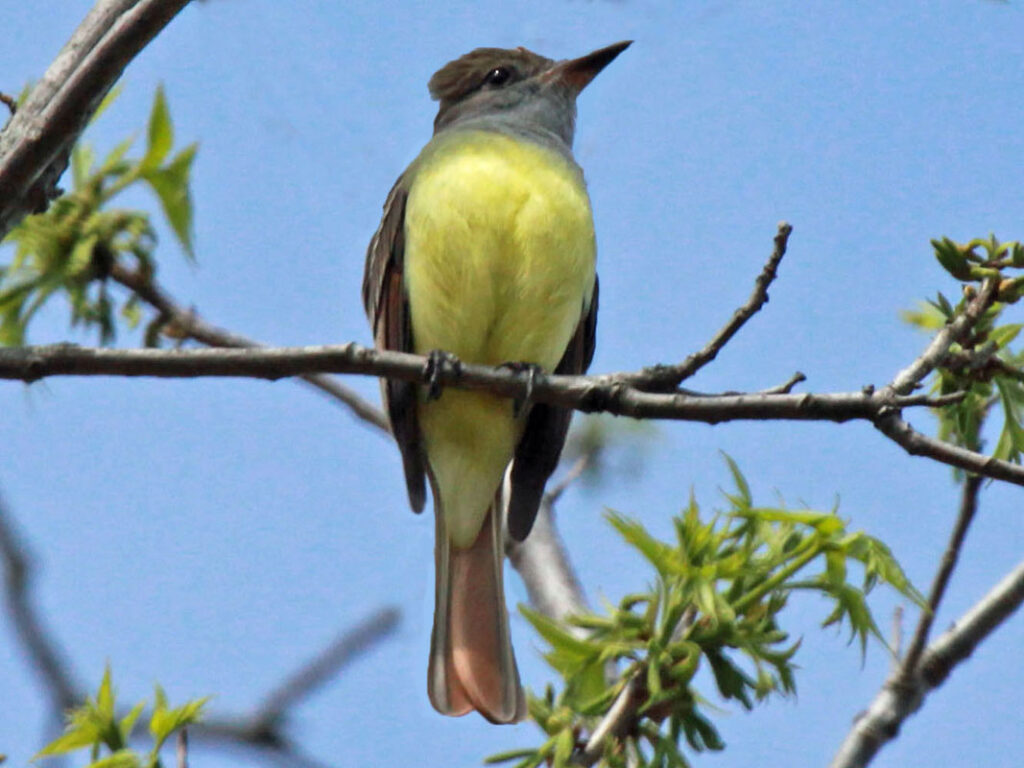
The Great Crested Flycatcher is mostly brown, having a yellow chest and a bluish-gray neck.
Their tail and wing plumage have a crimson tinge. It’s hard to make out the crest.
The Great Crested Flycatcher is a bird that breeds in the eastern half of North America but spends the winter in the warmer climates of Southern Mexico, Central America, and Southern Florida.
They wait high, mostly in trees, for huge insects like butterflies, grasshoppers, moths, wasps, and spiders to fly by.
They like forests with a variety of tree species, as well as the outskirts of open spaces, parks, and tree-lined neighborhoods, and they even inhabit man-made structures like fenceposts.
Berry and tiny fruit consumption are also common.
Planting natural types of plants and leaving brush piles to entice insects can help bring more Great Crested Flycatchers toward your property.
Nest boxes and berry-producing bushes attract these birds because they provide food and shelter.
9. Cedar Waxwing

Elegant and sociable, Cedar Waxwings are mostly grey except for the brown of their crests, heads, and chests.
Their underside is a very light shade of yellow, while their tips are a brighter shade of yellow.
Their wingtips are a brilliant shade of red, and they sport a thin black mask above their eyes.
After successfully breeding across Canada, Cedar Waxwings go south to spend the winter.
They spend every season living in the northern states of the United States.
You may hear their high-pitched cry in the woods, beside the stream, or on a berry patch.
Cedar Waxwings might be attracted to your garden by planting natural shrubs and trees that produce tiny fruit, like winterberry, dogwood, hawthorn, juniper, and serviceberry.
Fruits may be tried on platform feeders as well.
10. Red-Eyed Vireo

The red-eyed vireo has an olive-green upper body and a white underside.
They possess grey manes and white bars above each eye. When seen from a distance or under some lighting circumstances, their crimson eyes might look black.
Aside from the Southwestern United States, Alaska, and the extreme north of Canada, red-eyed vireos breed across the rest of North America throughout the summertime.
It’s wintertime, so they go to South America.
They populate woodlands throughout the summer, yet they typically stay in the treetops.
11. Golden-crowned Sparrow

Golden-crowned Sparrows have a brown-streaked appearance, while their backs have a grayish-brown coloration.
They possess a brilliant yellow forehead and a black crown on top of their heads.
The colors become more subdued throughout the winter, having brown dominating the crown and a yellow forehead that seems more muted.
Golden-crowned Sparrows migrate toward the West Coast for the winter after spending the summer breeding across Alaska and western Canada.
During the winter, you might see them rummaging through weedy fields in search of seeds like dock, sumac, and geranium.
In addition to it, they consume food like grapes, apples, olives, and elderberries.
Insects, including butterflies, ants, termites, beetles, and others, make up a portion of their food as well.
You might put seeds in field feeders or grow native plants that provide fruit in your garden to increase the number of Golden-crowned Sparrows.
12. White-breasted Nuthatch

Nuthatches having white breasts are lively tiny birds that have a grayish-blue back, white on the abdomen and face, and a black crown.
It is common to see a chestnut tint on the lower abdomen and beneath the tail of these animals.
White-breasted Nuthatches are resident throughout the year in the majority of Southern Canada and states in the United States.
In addition to bird feeders, they are common in woodland borders, deciduous woods, gardens, and parks with trees.
The majority of their diet consists of different kinds of insects, such as beetles and their larvae, spiders, caterpillars, and even ants.
Sunflower seeds, hawthorn berries, acorns, and even maize crops may be found in the diet of white-breasted nuthatches.
They also consume nuts and seeds.
They push huge nuts and acorns into the bark of trees and then use their bills to crack them apart or “hatch” them so the seeds may fall out.
Putting sunflower seeds and peanuts in suet or tube feeders can encourage numerous White-breasted Nuthatches to visit your garden.
13. European Starling
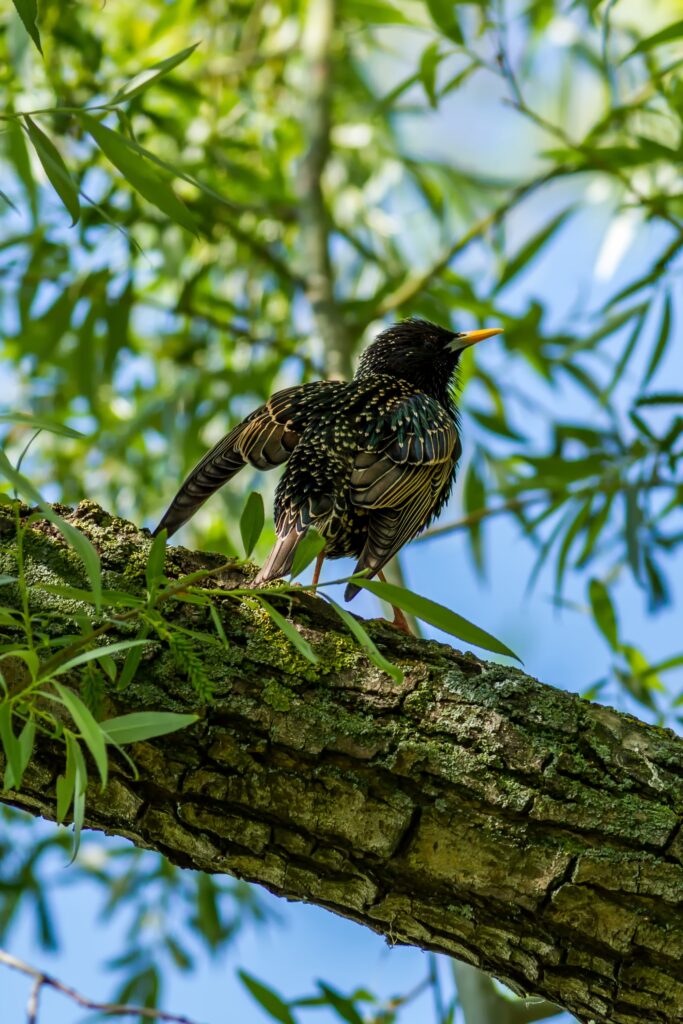
The European Starling isn’t a native bird, yet it has emerged as one of the most common types of songbird.
They are stout, black birds that have iridescent blue, purple, and green tones in their feathers.
Aside from the northern parts of Alaska and Canada, European Starlings may be found over the whole of North America.
These birds may be observed sitting in groups on the tops of trees or soaring over fields in flocks.
Some people find them to be a nuisance owing to the aggressive behavior they display in big numbers.
Insects, such as caterpillars, beetles, and flies, as well as spiders and earthworms, make up the bulk of a starling’s diet.
In addition to this, they consume fruit such as holly berries, cherries, Virginia Creeper, mulberries, blackberries, and sumac, in addition to seeds and grains.
Suet, peanuts, sunflower seeds, and cracked corn are some of the best foods to provide in your garden feeders if you want to see numerous European Starlings.
14. Tufted Titmouse
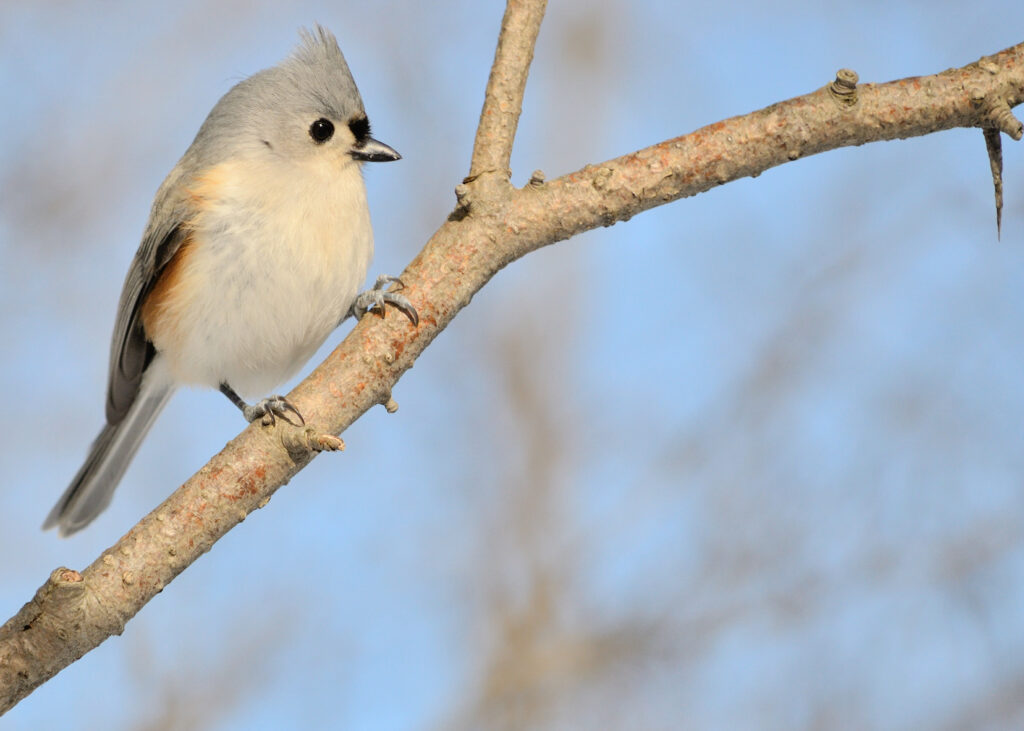
The Tufted Titmouse is a little bird with a charming grey crest and wide eyes that frequently congregate among woodpeckers, chickadees, and nuthatches.
It is grey on the back and white underside.
Tufted Titmice spent the whole year across states in the Southeast and East.
The Tufted Titmouse is a bird that lives in parkland, wooded areas, and even at bird feeders in people’s backyards.
It has the ability to be dominant over other, smaller birds.
During the warm summer months, the majority of their diet consists of insects, such as beetles, caterpillars, wasps, and ants.
They also consume snails and spiders. In addition, they will consume berries, fruits, and nuts, and they’ll store up shelled seeds.
Suet, sunflower seeds, and peanuts placed in tube feeders or suet cages may all be used to entice tufted titmice to the feeders in your garden.
They will also consume food from platform feeders if provided.
You might also try setting up a nesting box in the hopes of luring in a mating couple.
15. Carolina Wren

The upper part of Carolina Wren’s body has a dark brown color, while the underside is lighter brown.
They produce a loud melody that sounds like a teakettle and has a white line across their eyebrows.
The Eastern and Southeastern United States is home to Carolina Wrens during the whole year.
They are more likely to be seen in densely planted or wooded regions, and they’ll use yard bird feeders.
Putting hulled sunflower seeds, peanut hearts, or suet feeders in big tube feeders or on-platform feeders in your garden will help you entice many Carolina Wrens.
16. Ruby-crowned Kinglet

Ruby-crowned Kinglets are little songbirds that seem olive green, and the males possess a magnificent red crown that is normally flat and difficult to notice, but it is truly amazing when you do. Ruby-crowned Kinglets may be found across North America.
During the breeding season, Ruby-crowned Kinglets may be found throughout Canada and in the western Rockies.
However, they spend the winter throughout the southwestern United States, the southern United States, and Mexico.
They are also easy to recognize during migration when they are extremely common.
Ruby-crowned Kinglets are fast-moving, silent birds that search the vegetation of bushes, lower branches, and trees for insects and spiders.
They may be difficult to identify because of their quick movement and quiet nature.
They frequent platform feeders and suet feeders in search of peanut hearts, mealworms, and hulled sunflower seeds.
17. White-throated Sparrow

White-throated Sparrows may be identified by their striking white and black banded heads, brilliant white throats, and yellow patches between the bill and eye.
Their undersides are grey, whereas their backs appear brown.
Migratory birds, such as the White-throated Sparrow, do most of their breeding across Canada before migrating south for the wintertime to spend time mostly in the Southern and Eastern United States as well as on the Pacific Coast.
Mostly on the ground in woodlands and forests, as well as around the boundaries of forested regions, big flocks of white-throated sparrows may be seen foraging together.
The seeds of weeds and grasslands make up the majority of the White-throated Sparrow’s diet.
They also eat fruits like blueberries, sumac, grapes, mountain ash, dogwood, and blackberries.
They will also consume a significant amount of insects that are found on the forest floor, particularly during the summer months.
Using platform feeders in your garden, offering sunflower seeds and millet can entice White-throated Sparrows to visit.
18. Carolina Chickadee

The Carolina Chickadee is a little bird that may be identified by its big head, black neck and cap, white abdomen and face, soft grey tail, back, and wings.
They have a high degree of visual similarity to the Black-capped Chickadee, with which they are able to successfully interbreed in areas where their ranges overlap.
During any time of the year, you may discover them in the forests, parks, and gardens in the Southeastern and Eastern United States.
Nyjer, sunflower seeds, suet feeders, and peanuts seeds are some of the bird foods that might bring numerous Carolina Chickadees toward the feeders in your garden.
They are able to consume food from a wide variety of feeders, such as suet cages, platform feeders, and tube feeders.
They are also known to use nest tubes and nesting boxes to lay their eggs.
19. Yellow Warbler

During the summer, you may see Yellow Warblers, little birds that are a brilliant yellow on the back and front, having a yellow-green back and chestnut stripes on the breasts of the males.
To breed, yellow warblers disperse throughout most of North America, and then they travel thousands of miles south towards Northern and Central South America for the winter.
In the South, you may observe them as they migrate.
The Yellow Warbler is a little songbird that may be seen searching for insects such as beetles, midges, bugs, wasps, and caterpillars in thickets and at the borders of fields near water.
Because they are elusive and feed mostly on insects, warblers may be challenging to entice to your garden.
You may entice Yellow Warblers with peanut butter, suet, and oranges, as well as by planting berries and insect-attracting natural plants (so no pesticides or excessive cleanliness, please).
Hidden fountain birdbaths surrounded by dense vegetation for cover.
20. Tree Swallow

Tree Swallows are little birds having a blue-green upper body and a white underside; the males also have darker grey wings.
Women tend to be darker brown than men.
After spending the summer reproducing in Canada, Alaska, and the northern United States, Tree Swallows migrate to the southern United States and winter in the Gulf Coast states, Mexico, Florida, and the southern border.
Several hundred thousand at a time may be observed migrating across the southern states.
Tree Swallows inhabit forested marshes, meadows, swamps, and other wet habitats because they are good sources of the flying insects they eat.
Nesting boxes are an easy way to entice more Tree Swallows toward your garden.
21. Common Grackle

Small, plain brown birds with darker barring on the tails and wings and a lighter neck make up the species known as the Common Grackle.
Common Grackles breed throughout the summer months in the northern states and then migrate to the southern states and Mexico for the winter.
Common Grackles are common garden birds that also frequent parks and open woodlands in search of spiders and insects.
They’re the ones that jump about happily, singing their song, through the underbrush and tangles of a forest.
When competing with bigger birds for prime nesting territory, Common Grackles may be quite aggressive, even to the point of removing eggs and young from their nests.
To encourage numerous Common Grackles to make your garden their home, leave brush piles or provide a nest box.
Conclusion
In conclusion, small birds are a fascinating group of species that add color, music and life to our natural surroundings.
With 21 different types, they come in various shapes, sizes, and colors and each one of them has its own unique features.
From the energetic and acrobatic hummingbirds to the bold and beautiful finches, small birds have a special place in the hearts of bird-lovers everywhere.
Whether you’re an avid birder, or just enjoy observing these winged wonders in your backyard, taking time to appreciate the different types of small birds is a rewarding experience.
So next time you spot a tiny flitting bird, take a moment to observe and appreciate the beauty and diversity of these incredible creatures.
FAQ
What is a small bird?
A small bird is typically defined as a bird species that has a length of less than 8 inches. This can include both migratory and non-migratory species, and birds that are found in various habitats such as forests, grasslands, and urban areas.
How many types of small birds are there?
There are approximately 21 different types of small birds.
Do small birds migrate?
Yes, some small bird species migrate to avoid harsh weather conditions or to find food. Others remain in their breeding areas year-round.
Why are small birds important?
Small birds play an important role in maintaining the balance of nature by serving as pollinators and seed dispersers, and by serving as a food source for larger animals. They also add to the beauty and diversity of the natural world, and bring joy to bird-lovers everywhere with their songs and acrobatic displays.
How can I attract small birds to my yard?
To attract small birds to your yard, you can provide food, water, and shelter. Offer a variety of food sources, such as bird feeders filled with seeds, suet, and nectar, and place birdhouses in suitable locations. You can also provide a bird bath or other water source for drinking and bathing.
Last Updated on March 22, 2023 by Lily Aldrin
